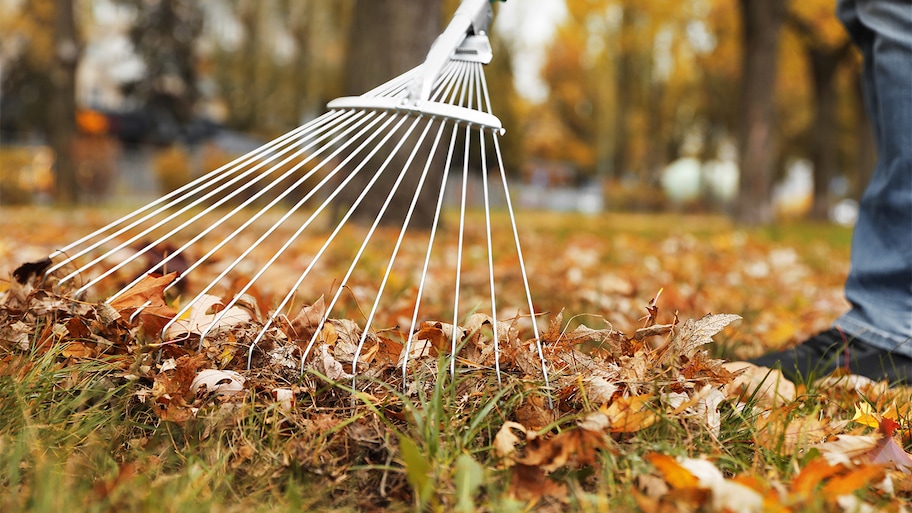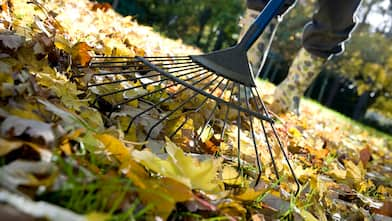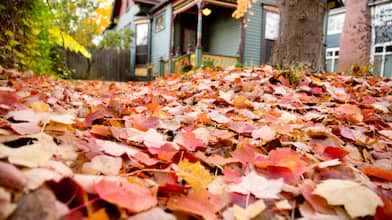Use these 13 tips to take the hassle out of raking the leaves
Apple cider and crisp air are sure signs of fall. And the other sure sign? Colorful leaves scattered all across your lawn. Whether you’ve got a single tree or several, find out how to get the job done with these simple tips for raking your yard efficiently.
1. Get the Right Rake
It may sound silly, but all rakes are not created equal, nor do they all do the same thing. Here are the basic rakes you will likely have (or may need) for general yard maintenance.
Leaf Rake
Usually plastic, bamboo, or aluminum, these wide, lightweight rakes are ideal for leaf raking. They cover more territory and are designed so that they won’t catch on the leaves. The lighter weight helps keep you from getting too fatigued during a long afternoon in the backyard.
Shrub Rake
Similar to a leaf rake but smaller and narrower, these are designed for getting around perennials and shrubs.
Metal Rake
Most wide, metal rakes are not suitable for leaf raking as they tend to spear the leaves and dig too deeply into the lawn below. These types of rakes are better for evening out soil and spreading mulch. Metal thatch rakes are designed specifically to remove thatch and dead grass from lawns.
Leaf Scoops
These hand-held, small scooping rakes are ideal for getting dry leaves into bags and make the job faster than just gloved hands alone.
2. Make Mini Piles
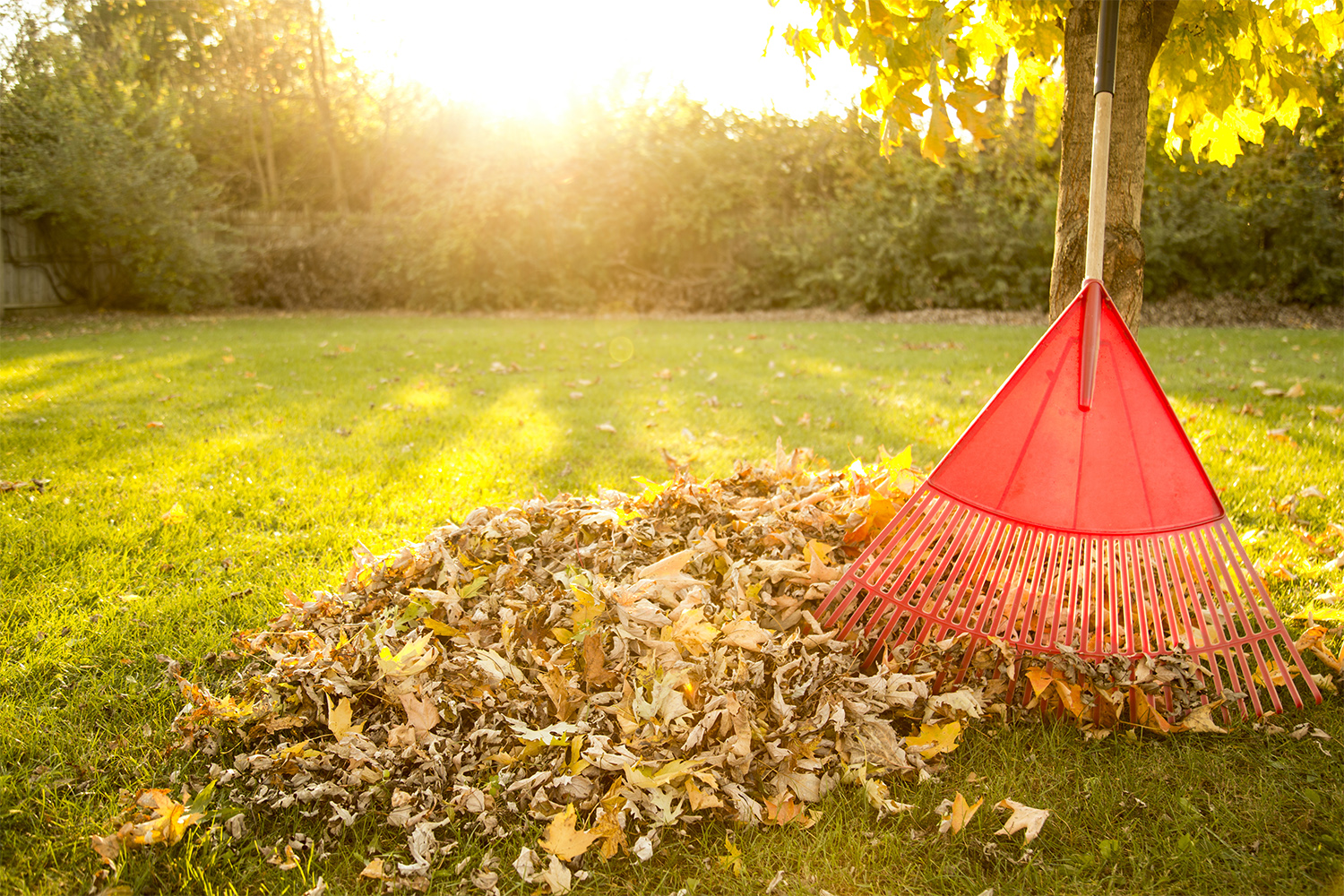
When you rake, make smaller piles first, rather than one giant pile in the middle of your lawn. Not only will this be less tempting to neighborhood kids to jump into, but it will also make bagging and leaf removal easier.
3. Use a Tarp
Rake onto a tarp. Use rocks along the edges of the tarp to weigh it down and prevent it from blowing over. You can move the tarp around to your smaller piles rather than having to rake the piles over to the tarp. When you’re done, simply funnel the leaves into lawn bags.
4. Mind the Wind
Don’t rake on a super windy day. All your hard work will blow away, or worse, right back onto your lawn. Use it as an excuse to watch football and return to this project another time.
5. Watch the Forecast
Just as you don’t want to rake on a super windy day, you definitely don’t want to rake in or just after rain. Raking and scooping wet leaves is a lot harder than working with dry leaves, and if you use paper bags, they won’t stand up to the H2O.
6. Slow and Steady Wins the Race
Rather than waiting until the entire yard’s worth of autumnal leaves have scattered upon your lawn, try to do a little each week as they fall, and one final clean up once the trees are bare.
7. “Leave” Some Behind
See what we did there? Many gardeners prefer to leave leaf matter on their lawns, which acts as a natural fertilizer and mulch during the winter months. While most landscapers and gardeners agree you don’t want to leave too thick of a layer, a moderate amount of leaves are actually good for your lawn. You can mow right over them, which chops them up and creates a nice layer of leaf mulch.
Pro tip: Mowing over the leaves before you rake breaks them up, making them easier to round up and less likely to blow away.
8. Mulch Your Beds
Whether you choose to chop your leaves using your mower or keep them intact, dried leaves make an excellent mulch in perennial beds. Leaf mulch protects against frost, decomposes to add nutrients to the soil, and best of all, it’s free!
9. Wear Gloves
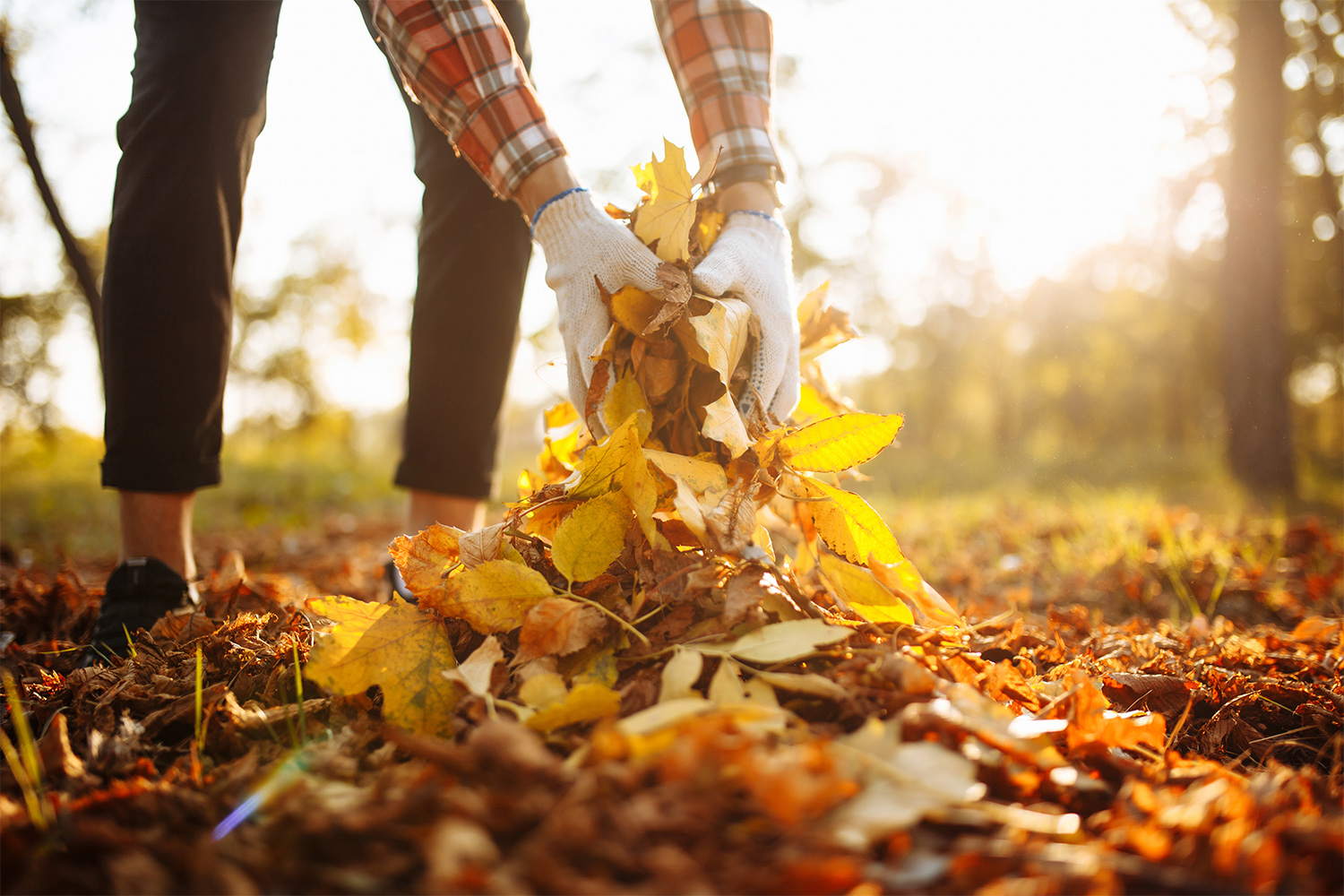
Raking involves a lot of repetitive motion, and the odds are you’re going to rub your hands the wrong way after a while. So do yourself a favor and wear a pair of garden gloves, even the thin kind, to help protect your hands.
10. Wear a Mask
Consider wearing a face mask or bandana while you rake to keep the leaf dust and mold from blowing into your face.
11. Sweat It Out
Raking will provide a light cardiovascular workout, so even if it’s a cold day, don’t forget to hydrate and wear layers you can remove as you heat up.
12. Dispose of Leaves Wisely
Once you’ve used all the leaves you can for garden mulch, consider adding them to your compost pile. They break down well and can contribute to rich soil. If you don’t have the space to do this, the next best thing is to bag your leaves in paper bags and arrange for a curbside pickup or haul them to a nearby city composting site. Avoid just throwing them in your garbage or the landfill—some cities prohibit this, and it’s better for the environment if you can use them for organic compost.
Pro tip: Use a folded piece of cardboard to act as a funnel when you are bagging up the leaves.
13. Use a Leaf Blower Sparingly
If you choose to use a leaf blower, don’t just blow the leaves off your lawn into the sidewalk or street, where the wet leaves will clog drains and make a slick mess. Instead, use a leaf blower to move the leaves into a pile, onto the tarp, and off pathways.
To Rake or Not to Rake?
If you aren’t physically able or prefer to spend your Saturday apple picking, consider hiring a garden service. A yard clean-up service near you can pick up leaves, remove dead plants, and more.


